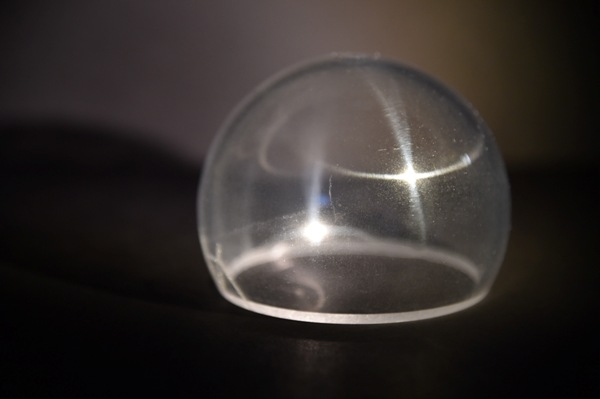In a recent article “US Navy research looks at glass alternative”, it was suggested that a new high tech material could make a smartphone unbreakable by using a material developed for transparent armor and highly scratch resistant passive optics by the US Navy Research Lab (NRL).
The material in question is Spinel; for the material-inclined reader, we are talking about magnesium aluminate (MgAl2O4) here. This material is not new by any means, as the material group appears in nature in form of gem stones. In nature, the crystals are typically doped with other elements, making them colored in a wide array of tints. This particular development from NRL is not new by any means, it has been going on for about 10 years and is part of the search for hard transparent materials in general. The two main focus areas of this research were the search for transparent armor and specific requirements for transparent windows on high velocity missiles.
 Source: US Navy Research Lab
Source: US Navy Research Lab
Besides Spinel the NRL also researched ALON (aluminum oxynitride), sapphire and other materials. In general these minerals have properties that are often superior to available glass types. This is especially true for the mechanical and optical properties. In the case of Spinel, we find that the Young’s modulus is approaching 280 GPa compared to about 72GPa for Gorilla Glass and 345 GPa for sapphire. On the negative side, Spinel has a density of about 3.6 g/ccm compared to 2.44 g/ccm for Gorilla Glass and 3.98 g/ccm for sapphire. It is no surprise that these minerals have typically a much higher density leading to an increased weight at the same thickness.
From an optical perspective they also show a much higher refractive index. In the case of Spinel we find that the index is in the range of 1.7 to 1.8 compared to about 1.5 for Gorilla Glass and 1.7 for sapphire. As a reminder, a higher refractive index translates into a higher surface reflection, not a desirable property for any window. On the other hand Spinel shows a very wide transmissivity window from the UV to the near IR, which makes it a top candidate for missile guidance systems for example.
In addition, producing minerals requires much higher temperatures than making glass. It was this lowered melting temperature that was leading glass development for centuries. In the case of Spinel, the melting temperature is 2.135°C (3.875°F) compared to a softening point of 852°C (1,565°F) for Gorilla Glass and a melting point of 2,303°C (4,177°F) for sapphire. As one can imagine, this leads to all kind of issues for manufacturing these minerals cost effectively.
The NRL is overcoming this issue by sintering fine powders at lower than melting point temperatures into transparent materials used for the respective applications. Still, compared to making tons of glass in a day, the sintering method is not suitable for making cover glass windows for smartphones. Cost is still the major factor in making consumer electronics. Taking a particular material property and believe it would be great in a specific application is a scientific approach that often falls flat on its face as soon as manufacturability becomes an issue. Just look at all the speculations for sapphire smartphone covers by technology bloggers that have not materialized. (NH)

